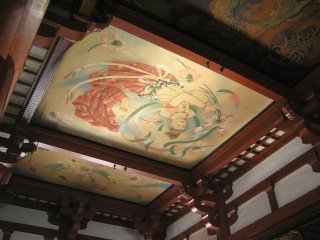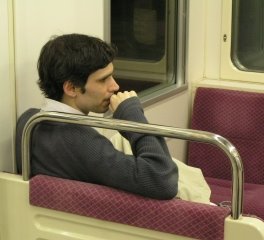Kamakura IV

At the top of the hill at the second Buddhist complex, I found myself alone surrounded by guardian statues. These black cast creatures stood at least four feet high (some higher) and wore masks with bird-like beaks.
I am surprised to have never seen these creatures make an appearance in American film. The experience was spooky because the only sounds came from large, loud black crows not unlike the Hitchcock film. Tokyo is filled with these birds. They dominate the limited natural landscape and remind clubbers of the early hours when the sun rises.
Stairs wound around these creatures as they guarded the grounds studded with tombstones engraved with prayers. From what I remember in Hong Kong temple grounds, this is where families pray for dead family members. The top of the hill were two small buildings with supplies for rituals locked inside.
Several vista stands had been built for viewers at the top. An earlier photograph is from the top of this hill.












